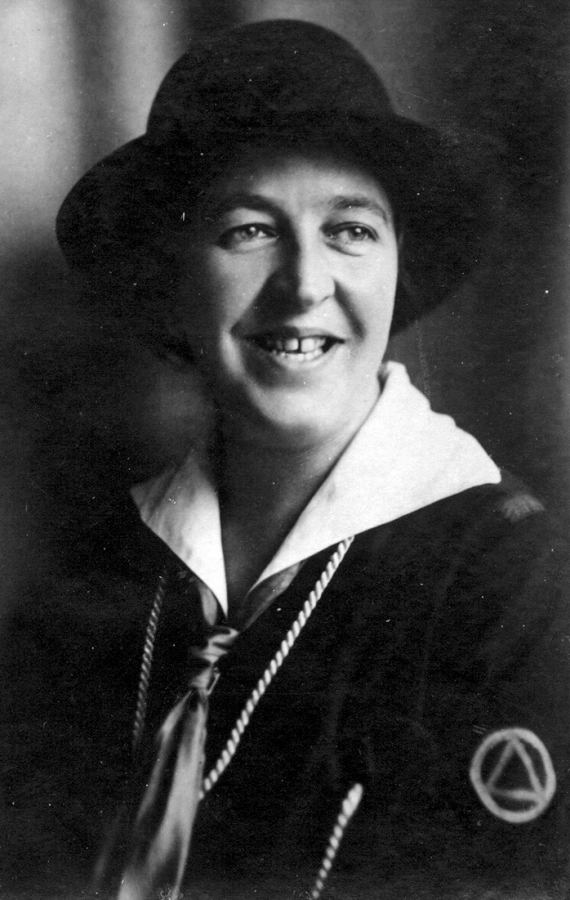The World Entire
“There is no pit so deep that God’s love is not deeper still.”
–Corrie ten Boom
Corrie ten Boomhuis (opened 1988)
Haarlem, Holland
A quotation attributed to Edmund Burke states, “The only thing necessary for the triumph of evil is for good men to do nothing,” a philosophy of which Corrie ten Boom adhered. After visiting the Corrie ten Boomhuis, one imbibes her commitment to humanity.
Tick…tick…tick…echoed through the watch shop located on Barteljorisstraat 19–called by its shortened version, the Beje. Casper ten Boom, (known as “Opa,” Dutch for grandfather), inherited the store from his father who founded the firm in 1837. The second and third floors served as the family’s residence that included Casper’s wife, Cornelia, (Cor), and their children, Elisabeth, (Betsie), Willem, Arnolda, (Nollie), and Cornelia, (Corrie) Arnolda Johanna, who arrived on April 15, 1892. In the evenings, Caspar read biblical passages to his family such as the Psalm, “You are my hiding place and my shield. I hope in Your word.” 
At age fourteen, Corrie met Karel with whom she later had a romance that ended when he introduced her to his fiancée. As Corrie knew she would never love another, and as her brother Willem joined the ministry, she determined to become the third generation of ten Boom watchmakers. As the only place that offered classes in horology, (the study of watchmaking), were in Switzerland, the cost was prohibitive. A source recounts-though it may be apocryphal-Corrie read a magazine article about Emperor Karl I of Austria whose gold pocket watch played “Ranzdes Vaches” a Swiss folk song. After the Emperor’s abdication, master watchmaker Caspar oversaw its sale, and his commission financed his daughter’s dream. In 1921, Corrie became the first licensed female watchmaker in Holland, a joy darkened by her mother’s passing from a stroke.
In 1937, Holland celebrated the marriage of Crown Princess Juliana to the German prince, Bernhard of Lippe-Biesterfeld, and the ten Booms held a party to mark the 100-year anniversary of their family business. Jewish customers who had turned in their timepieces for repair never reclaimed their property.
The horror of the Third Reich arrived in the Netherlands in 1940 with the Luftwaffe bombing of Holland that included the Schiphol Airport situated five miles from the ten Boom residence. The Occupation dictated Jews had to wear a yellow Star of David. Caspar stood in line to receive his star; if all the Dutch wore them the invaders would have trouble identifying their prey. Caspar said of the Nazi invaders, “I pity the poor Germans. They have touched the apple of God’s eye.”
Desperate Jews arrived at the ten Booms’ door, and the Beje transformed to the “De Schuilplaats” that translates to The Hiding Place.” What elevated the risk was the home was situated half a block from the Haarlem police headquarters. Corrie obtained black market ration cards that she camouflaged in a cubbyhole in the stairwell. She devised a code: if a wooden Alpina Watch sign was visible from the dining room window, it was safe to enter; its absence signified danger. An outside mirror of the shop warned if friend or foe approached. Hidden in a grandfather clock, the Dutch Resistance smuggled in bricks and mortar they used to build a secret compartment in Corrie’s bedroom where six adults could hide in an upright position. Access to the space behind the fake wall was through a wooden linen closet with a removable bottom panel. The family christened the space “Engelenbak” which means “The Angels’ Den.” An estimated 800 people survived due to the ten Booms’ underground.
In 1944, a Dutch collaborator informed the Nazis of suspected illegal activities in the ten Boom residence. As the police led Corrie away, she pretended to trip, thereby knocking down the Alpina sign. The ruse did not work. Due to Caspar’s advanced age and sterling reputation, a Gestapo officer offered to release him if he swore he would not cause further trouble. Caspar replied that if he went home tomorrow, he would open his door to anyone who knocked. Ten days later, Casper passed away in Scheveningen Prison; his burial was an unmarked grave in Loosduinen Cemetery. Locked in her cell, Corrie endured beatings and mourned the death of her father. A shred of solace arrived with a letter; hidden under its stamp were the words, “All the watches in your cabinet are safe.”
Corrie and Betsie entered the valley of the shadow of death–Ravensbrück, the only women’s concentration camp. Life was a treadmill of torture: sadistic guards, starvation diet, and lice-infested blankets. Numbers replaced names; Corrie’s was 66730. The ten Boom sisters conducted clandestine services in their barracks using a contraband Dutch Bible. Betsie succumbed to the conditions in 1944. Corrie received a red card: those over fifty were earmarked for extermination. Through an administrative error, Ravensbrück officials released Corrie.
Upon her return to the Beje, Corrie continued her humanitarian work. She established a center for concentration camp survivors, and in the spirit of Christian forgiveness, Corrie permitted the inclusion of collaborators. In 1946, the humanitarian organized a worldwide ministry that took her to sixty countries over the course of thirty-three years. Her platform preached a condemnation of the Vietnam War and the advocacy of the inmates of San Quentin prison. In a church in Munich, she encountered a man in a trench coat, a former Ravensbrüch guard. She took his outstretched hand, and as she did so, she recalled that she had never known God’s love as intensely as she did at that moment. The motto of her ministry, “What I spent, I had; what I saved, I lost; what I gave, I have.”
Although she never sought recognition, Corrie was the recipient of many honors: Queen Julianna of the Netherlands knighted her, Israel’s Yad Vashem invited her to plant a tree in the Avenue of the Righteous Gentiles, the Hopi Tribe adopted her as a sister. Her story was the triumph of the kryds, the cross, over the hakenkruis, the swastika.
In 1971, Corrie published her memoir, The Hiding Place; four years later, evangelist Billy Graham turned it into a movie. At age eighty-five, Corrie rented a house in Placentia, California, that she named Shalom-the Hebrew word for hello, goodbye, and peace. In her late eighties, she suffered a series of strokes that left her paralyzed and unable to speak. On April 15, the date of her ninety-first birthday, the clock of Corrie’s life wound down. Her epitaph in Fairhaven Memorial Park in Santa Ana, California, bears the inscription, “JESUS IS VICTOR.” She left behind her adopted son, Do Van Nguyen.
Corrie ten Boomhuis: The history of the house at Barteljorisstraat 19 originated in the sixteenth century at the directive of the bailiff of Haarlem. The structure originally consisted of two houses that merged into one, the reason for its warren of rooms. The exterior of the museum is easily identifiable due to its second story over-sized clock with a blue background; underneath, in the same color, is a sign: The ten Boom Museum. Visitors gather in the living-room that has a red carpet and floor to ceiling red drapes.
At first glance, the Beje appears to be a well-appointed 1940s house. On the walls hang photographs of the ten Boom family: Caspar working on his watches, standing in the doorway of his shop, the patriarch with his wife and children. There are religious relics such as Corrie’s English Bible and the sheet music on the piano with the song lyrics, “You are My Hiding Place.” A tapestry of a gold crown with a royal blue background serves as metaphor: one side has the completed picture, the other, a tangled web of threads. The symbolism is man only understands the chaotic side; God sees the perfect plan. A wooden plaque on a blue background holds the message, “Jesus is victor.” A wooden plaque states: CORRIE TEN BOOM PRISONER OF THE LORD JESUS September 1977, San Quentin Prison.
The artifacts from the Nazi era are jarring: the wooden Alpina sign, green contraband radio, Ravensbrück-issued suitcase, decaying ration cards located by the cubbyhole in the stairs. Over a doorway, a map of Europe displays the concentration camps; in red is the number of fatalities. A wall bears the words “Tramping for the Lord” that depicts every country Corrie visited during her years in the ministry.
When a tour-guide entered Corrie’s former bedroom, she explains that hundreds of Jews survived the Dutch Occupation because of the ten Boom family. Part of the tour permits willing-and supple-visitors an opportunity to squeeze into the linen closet and stand in the hiding place, “the Angels’ Den.” In the claustrophobic space visitors can imagine the terror of the four men and two women who hid during the Nazi raid. They stood in the darkness, without water or bathroom facility, fearful of discovery, till the Resistance rescued them after forty-seven hours. Five of the six survived the Holocaust.
A quotation from the Talmud encapsulates the life of Corrie ten Bloom, “He who saves a single life, saves the word entire.”
The Window of Her World: If Corrie could gaze once more from the window of the Beje, she would see streets signs: Noord-Hollands Archief/Frans Hals Museum/Corrie ten Boomhuis.


